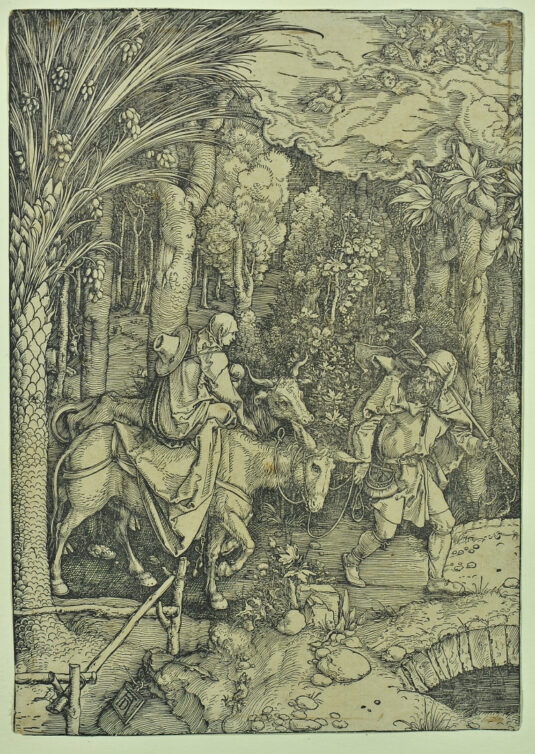
Dangerous Beauty: The Prints of Albrecht Dürer
Art Gallery of Greater Victoria, Victoria, BC - Dec 13, 2025 – May 3, 2026
A leading figure in the Northern (European) Renaissance, Albrecht Dürer (1471–1528) is best known for Praying Hands (c. 1508), a pen, ink and chalk-heightened study on blue paper. Here, devotion is expressed both in the hands of the believer and through the hand of the highly skilled artist who was inspired to bring those hands to life—the artist and believer at one with the other. However, it was through printmaking that Dürer made his mark, and equally so through his interest in precarious scenarios.
Sharing artwork from the AGGV collection, Dangerous Beauty features twelve prints that pair Dürer’s sublime technical skills with situations that sometimes threaten the lives of those pictured. While monsters make for obvious villains, other prints evince a quieter malevolence, as in the woodcut St. John before God and the
Elders (c. 1496–98, published 1511). This work depicts the gates of heaven floating above a pastoral landscape, with a recently departed soul kneeling before Saint Peter and a zonedout God behind them, semicircled by a menacing gaggle of gift-bearing men.
Additional works where danger is neither clear nor present but nestled in the uncanny include the engraving St. Eustace (c. 1500–1502). According to legend, Placidus, a Roman general, sees from his horse a crucifix in the antlers of a stag. The stag speaks to Placidus in the voice of Christ, and Placidus falls from his horse, only to return to it a baptized Christian. In the woodcut The Flight into Egypt (c. 1503–4), danger is something to run from, as Joseph, Mary and the baby Jesus did after Joseph was warned in a dream that King Herod had it in for Jesus and wanted him dead.

